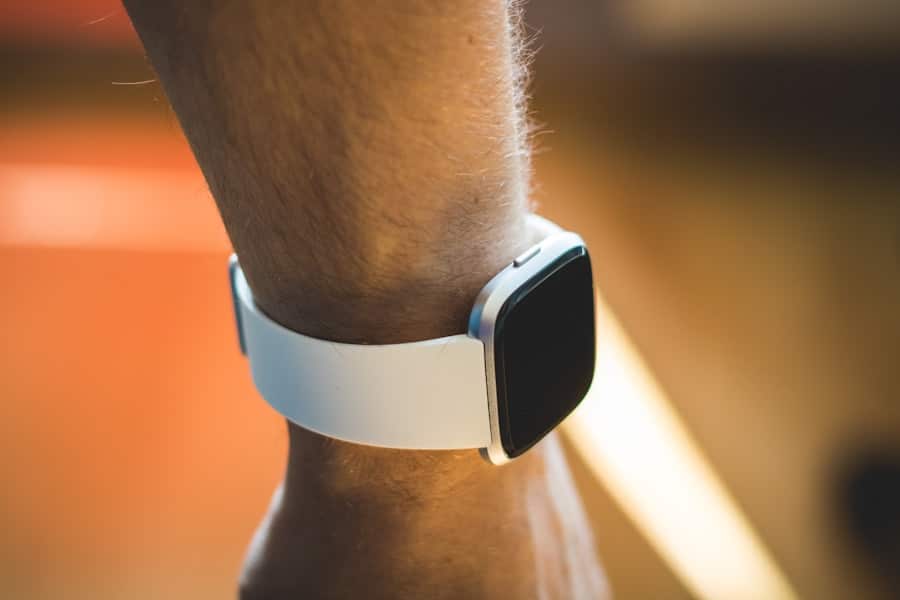In the modern workplace, sedentary behavior has become a pervasive issue, with many employees spending the majority of their work hours seated at desks. This phenomenon is not merely a byproduct of contemporary work culture; it is a significant health concern that has garnered attention from researchers, health professionals, and employers alike. The rise of technology and the shift towards digital communication have exacerbated this trend, leading to prolonged periods of inactivity.
The World Health Organization (WHO) defines sedentary behavior as any waking activity characterized by low energy expenditure while in a sitting or reclining position. In office environments, this can manifest in various forms, such as attending meetings, working on computers, or even engaging in phone calls.
The consequences of such behavior extend beyond mere discomfort; they can lead to serious health issues, including obesity, cardiovascular disease, and musculoskeletal disorders. As organizations strive to enhance productivity and employee satisfaction, addressing sedentary behavior has emerged as a critical component of workplace wellness initiatives.
Key Takeaways
- Sedentary behavior in workspaces can have a negative impact on health, leading to increased risk of chronic diseases.
- Wearable technology has become increasingly popular in workspaces as a tool to encourage movement and reduce sedentary behavior.
- Wearable tech encourages movement through features such as reminders to stand, tracking of physical activity, and setting activity goals.
- Wearable tech also plays a role in promoting good posture and ergonomics in the workplace, reducing the risk of musculoskeletal issues.
- Incorporating wearable tech into the workplace can lead to benefits such as improved employee health, increased productivity, and reduced healthcare costs.
The Impact of Sedentary Behavior on Health
The health implications of prolonged sedentary behavior are profound and multifaceted. Research has consistently shown that individuals who engage in high levels of sedentary activity are at an increased risk for a range of chronic health conditions. For instance, studies have linked excessive sitting to obesity, as it contributes to a decrease in energy expenditure and can lead to weight gain over time.
Furthermore, sedentary behavior is associated with metabolic syndrome, a cluster of conditions that increase the risk of heart disease and diabetes. Beyond metabolic issues, the impact of sedentary behavior on mental health cannot be overlooked. Prolonged periods of inactivity have been correlated with higher levels of anxiety and depression.
The lack of physical movement can lead to feelings of lethargy and decreased motivation, creating a vicious cycle that further entrenches individuals in sedentary habits. Additionally, the social isolation that can accompany desk-bound work can exacerbate these mental health challenges, highlighting the need for interventions that promote movement and social interaction within the workplace.
The Rise of Wearable Technology in Workspaces

In response to the growing awareness of sedentary behavior and its associated health risks, wearable technology has emerged as a powerful tool for promoting physical activity in the workplace. Devices such as fitness trackers, smartwatches, and health monitors have gained popularity among employees seeking to take control of their health. These gadgets not only track physical activity but also provide valuable insights into users’ daily habits, encouraging them to make healthier choices.
The proliferation of wearable technology in workspaces can be attributed to several factors. First, advancements in technology have made these devices more accessible and user-friendly. Many wearables now feature intuitive interfaces and seamless integration with smartphones, allowing users to easily monitor their activity levels and set personalized fitness goals.
Additionally, employers are increasingly recognizing the value of investing in employee wellness programs that incorporate wearable tech, as they can lead to improved productivity and reduced healthcare costs.
How Wearable Tech Encourages Movement
Wearable technology plays a crucial role in encouraging movement among employees by providing real-time feedback on their activity levels. Many devices are equipped with features such as step counters, heart rate monitors, and reminders to move after prolonged periods of inactivity. For instance, a fitness tracker may vibrate after an hour of sitting, prompting the user to stand up and take a short walk.
This immediate feedback serves as a powerful motivator for individuals who may not be consciously aware of their sedentary habits. Moreover, wearable tech often incorporates gamification elements that make physical activity more engaging. Users can participate in challenges with colleagues or track their progress against personal goals, fostering a sense of competition and camaraderie within the workplace.
This social aspect can be particularly effective in motivating employees to break free from their desks and engage in physical activity throughout the day. By transforming movement into a fun and rewarding experience, wearable technology helps to create a culture of health within organizations.
The Role of Wearable Tech in Promoting Posture and Ergonomics
In addition to encouraging movement, wearable technology can also play a significant role in promoting proper posture and ergonomics among employees. Many modern wearables are designed with features that monitor users’ posture throughout the day. For example, some devices use sensors to detect slouching or improper alignment while sitting at a desk and provide gentle reminders to correct posture.
This proactive approach can help prevent musculoskeletal disorders that often arise from poor ergonomics. Furthermore, wearable tech can assist in creating an ergonomic workspace by providing insights into how employees interact with their environment. For instance, some devices can analyze users’ movements and suggest adjustments to their workstation setup based on their habits.
By combining data-driven insights with ergonomic principles, wearable technology empowers employees to create healthier work environments that support both productivity and well-being.
The Benefits of Using Wearable Tech to Reduce Sedentary Behavior

The benefits of incorporating wearable technology into workplace wellness initiatives are manifold. One of the most significant advantages is the potential for improved employee health outcomes. By encouraging regular movement and promoting better posture, wearables can help reduce the risk of chronic diseases associated with sedentary behavior.
This not only enhances individual well-being but also contributes to a healthier workforce overall. Additionally, organizations that prioritize employee wellness through wearable tech often experience increased productivity and job satisfaction. Employees who feel supported in their health endeavors are more likely to be engaged and motivated in their work.
Furthermore, companies that invest in wellness programs may see reduced absenteeism and lower healthcare costs over time. The positive impact on workplace culture cannot be understated; when employees feel valued and cared for, they are more likely to contribute positively to the organization’s goals.
Challenges and Limitations of Wearable Tech in Reducing Sedentary Behavior
Despite the numerous advantages associated with wearable technology, there are also challenges and limitations that organizations must consider when implementing these solutions. One significant hurdle is the issue of user compliance; not all employees may be willing or motivated to wear these devices consistently. Factors such as privacy concerns or discomfort with tracking personal data can hinder adoption rates among staff members.
Moreover, while wearable tech can provide valuable insights into activity levels and posture, it is not a panacea for sedentary behavior. Employees may still struggle with ingrained habits or face barriers such as heavy workloads that limit opportunities for movement throughout the day. Additionally, there is a risk that reliance on technology could lead to a superficial understanding of health; without proper education on the importance of physical activity and ergonomics, employees may not fully grasp how to leverage these tools effectively.
Tips for Incorporating Wearable Tech into the Workplace to Reduce Sedentary Behavior
To maximize the effectiveness of wearable technology in reducing sedentary behavior within the workplace, organizations should consider several strategies for successful implementation. First and foremost, it is essential to foster a culture of wellness that encourages employees to prioritize their health. This can be achieved through regular communication about the benefits of movement and proper ergonomics, as well as by providing resources for employees to learn more about how to use their devices effectively.
Additionally, organizations should consider offering incentives for employees who actively engage with their wearable tech. This could include recognition programs for those who meet specific activity goals or team challenges that promote friendly competition among colleagues. By creating an environment where health is celebrated and rewarded, organizations can motivate employees to embrace movement as an integral part of their daily routines.
Furthermore, providing training sessions on how to use wearable devices effectively can empower employees to take charge of their health journeys. These sessions could cover topics such as setting realistic fitness goals, understanding data analytics provided by wearables, and integrating movement into daily tasks. By equipping employees with knowledge and skills related to their devices, organizations can enhance user engagement and ultimately foster a healthier workplace culture.
In conclusion, while wearable technology presents exciting opportunities for reducing sedentary behavior in workspaces, it is essential for organizations to approach implementation thoughtfully and strategically.
A related article to How Wearable Tech Reduces Sedentary Behavior in Workspaces is Top Trends on LinkedIn 2023. This article explores the latest trends in the professional networking platform for the upcoming year, providing valuable insights for individuals looking to stay ahead in their respective industries. By incorporating wearable tech to reduce sedentary behavior in workspaces, professionals can also stay informed about the latest trends and opportunities in their field.
FAQs
What is wearable tech?
Wearable tech refers to electronic devices that can be worn on the body, such as smartwatches, fitness trackers, and other devices that can monitor and track various health and fitness metrics.
How does wearable tech reduce sedentary behavior in workspaces?
Wearable tech can remind individuals to move and be active throughout the day by sending alerts and notifications. It can also track activity levels and provide feedback to encourage more movement and less sedentary behavior.
What are the benefits of using wearable tech to reduce sedentary behavior?
Using wearable tech to reduce sedentary behavior can lead to improved physical health, increased productivity, and decreased risk of chronic diseases associated with prolonged sitting.
Are there any potential drawbacks to using wearable tech for this purpose?
Some potential drawbacks include the need for consistent use and charging of the device, as well as the possibility of becoming overly reliant on the technology to prompt movement.
How can employers encourage the use of wearable tech to reduce sedentary behavior in the workplace?
Employers can promote the use of wearable tech by providing incentives, creating a supportive environment for device usage, and offering education on the benefits of reducing sedentary behavior.

